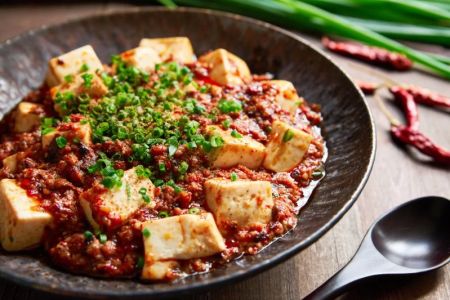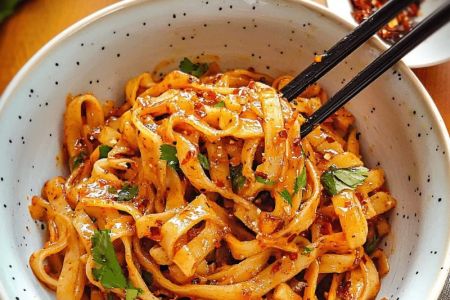What Does Chinese Eat? Exploring the Diverse Flavors of Chinese Cuisine
Chinese cuisine is one of the most diverse and vibrant culinary traditions in the world. With a history spanning over 5,000 years, it has evolved into a complex and varied set of regional cuisines, each offering a distinct experience. When you think of Chinese food, you might immediately think of dishes like sweet and sour chicken, dumplings, or hot pot. But there is much more to Chinese eating habits than what’s commonly seen in Western countries. In this article, we explore the fascinating world of Chinese food, focusing on what people in China typically eat, and the cultural significance behind these dishes.
1. The Regional Diversity of Chinese Cuisine
One of the most interesting aspects of Chinese food is the vast regional variation. From the spicy cuisine of Sichuan to the delicate flavors of Cantonese dishes, the type of food consumed often depends on the region. Let’s take a deeper look at the four primary culinary regions of China:
- Sichuan Cuisine: Known for its bold, spicy flavors, Sichuan cuisine makes use of chili peppers and Sichuan peppercorns, creating a signature numbing, spicy effect. Dishes like Mapo Tofu and Sichuan Hot Pot are favorites.
- Cantonese Cuisine: Famous for its light and delicate flavors, Cantonese food includes dim sum, a wide variety of steamed buns, dumplings, and rolls. Cantonese cuisine emphasizes freshness, and often uses minimal seasoning to let the natural flavors shine.
- Shandong Cuisine: Often considered one of the most influential culinary traditions in China, Shandong cuisine is known for its emphasis on seafood, soups, and strong flavors such as garlic and vinegar. Dishes like Sweet and Sour Carp come from this region.
- Jiangsu Cuisine: Known for its emphasis on fresh ingredients, delicate flavors, and the art of food preparation. Jiangsu cuisine focuses heavily on seafood and sweet, subtle flavors. A famous dish is Yangzhou Fried Rice.
2. Staples of Chinese Cuisine
While each region has its own specialties, there are a few staple foods that you’ll find throughout China. Rice and noodles are two of the most common staples that are present in nearly every meal. They are versatile ingredients that can be prepared in many different ways. For instance:
- Rice: In Southern China, rice is a staple food, often served with vegetables, meat, or fish. It's also the base of many dishes, including Fried Rice and Congee (a type of rice porridge).
- Noodles: Noodles are more common in Northern China and are made from wheat flour rather than rice. Popular noodle dishes include Chow Mein, Lan Zhou Beef Noodles, and Jajangmyeon.
3. Traditional Chinese Meals
Traditional Chinese meals typically consist of several dishes served together with rice or noodles. It’s common for meals to include a combination of meats, vegetables, and tofu, all prepared with varying cooking methods, such as stir-frying, steaming, or braising. A typical Chinese dinner may include:
- Stir-fried Vegetables: A medley of seasonal vegetables, often stir-fried in a hot wok with ginger, garlic, and soy sauce.
- Steamed Fish: A delicacy in many Chinese households, fish is often steamed with ginger, spring onions, and soy sauce, offering a light yet flavorful dish.
- Tofu Dishes: Tofu is a key ingredient in Chinese cooking. From Mapo Tofu in Sichuan to Douhua (tofu pudding) in the North, it appears in many forms and flavors.
4. Street Food and Snacks in China
Street food is an integral part of Chinese food culture. Throughout cities like Beijing, Shanghai, and Chengdu, you’ll find vibrant street food scenes offering everything from skewers of meat to sweet treats. Some popular street food items include:
- Jianbing: A savory Chinese crepe made with flour, eggs, and various fillings such as pickles and cilantro. This breakfast dish is popular among locals.
- Xiaolongbao: Soup-filled dumplings that are a must-try in Shanghai. The thin dumpling skins hold a flavorful broth, often served with vinegar and ginger.
- Chuan’r: Skewered meat, often lamb or chicken, coated in a spicy seasoning and grilled over charcoal. It’s a popular snack in northern China.
5. The Role of Tea in Chinese Dining
Tea holds a special place in Chinese culture and is typically consumed throughout the day, especially during meals. China is the birthplace of tea, and its influence can be seen in the many varieties grown and enjoyed in the country. Tea is often served at the beginning of a meal or alongside dishes to aid in digestion. Some of the most popular varieties include:
- Green Tea: Known for its light, refreshing taste, green tea is the most commonly consumed tea in China.
- Oolong Tea: A partially fermented tea with a unique flavor that falls between green and black tea.
- Pu-erh Tea: A fermented tea that’s often served with meals, especially those that are rich or fatty, as it helps with digestion.
6. Health and Nutrition in Chinese Food
Chinese food is known for its balance and health-conscious ingredients. Traditional Chinese medicine (TCM) plays a major role in the food choices people make. Many dishes are designed to promote balance in the body, with specific foods consumed to treat ailments or maintain good health. For example:
- Ginger: Used in many Chinese dishes, ginger is known for its anti-inflammatory and digestive properties.
- Garlic: A common ingredient, garlic is believed to promote heart health and improve immunity.
- Herbal Soups: Many Chinese soups are brewed with medicinal herbs to improve health and balance the body.
In conclusion, the foods that Chinese people eat are as diverse as the country itself. Whether you're enjoying a lavish banquet or grabbing a quick snack from a street vendor, Chinese cuisine offers something for everyone. With its focus on fresh ingredients, bold flavors, and healthy eating, Chinese food has something to offer to all tastes and preferences. So, the next time you’re craving something new and exciting, consider exploring the amazing world of Chinese food!







